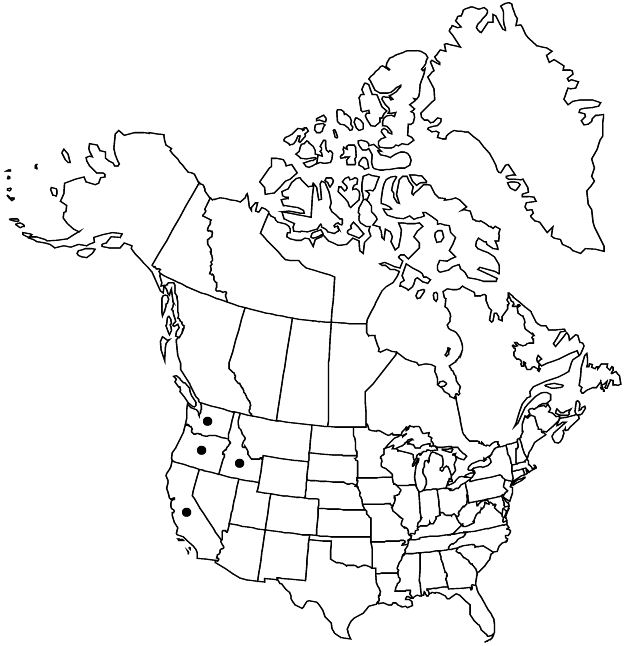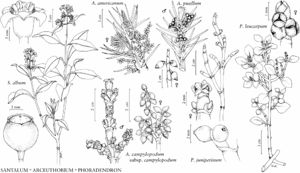Arceuthobium campylopodum subsp. campylopodum
Plants usually forming witches brooms. Stems yellow, green, olive green, orange, or brown, 8 (–13) cm; third internode 7–11 (–22) × 1.5–2 (–2.5) mm, dominant shoot 1.5–5 mm diam. at base. Staminate flowers 3 mm diam.; petals 3 (–4). Berries 5 × 3 mm.
Phenology: Flowering Aug–Oct; fruiting Sep–Nov.
Habitat: Coniferous forests with ponderosa or Jeffrey pine.
Elevation: 30–2500 m.
Distribution

Calif., Idaho, Oreg., Wash., Mexico (Baja California)
Discussion
Meiosis occurs in July, with fruits maturing 13 months after pollination.
The distribution of subsp. campylopodum overlays a subset of the range of its principal host, Pinus ponderosa. The treatment of the host species by R. Kral (1993) recognized three varieties, two of which (P. ponderosa var. ponderosa and var. scopulorum) intergrade in Idaho, Montana, and Washington. With this taxonomic concept, the hosts of subsp. campylopodum would include P. ponderosa subsp. scopulorum. In contrast, The Gymnosperm Database (http://www.conifers.org/pi/Pinus_ponderosa.php) uses a modification of the classification by F. Lauria (1991), which suggests that P. ponderosa is composed of four subspecies: subspp. ponderosa, benthamiana, brachyptera, and scopulorum. Based on the geographical limits of these four subspecies, it appears that Arceuthobium campylopodum subsp. campylopodum is restricted to the P. ponderosa subspp. ponderosa and benthamiana. In addition to P. ponderosa, P. jeffreyi is another principal host. Both are heavily parasitized, thus this mistletoe is considered a major pathogen of these commercially important trees (F. G. Hawksworth and D. Wiens 1996). Secondary to rare hosts include P. attenuata, P. contorta, P. coulteri, P. lambertiana, and P. sabiniana.
Selected References
None.
